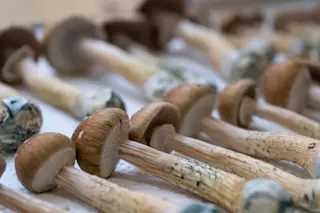The Veggie team at Desert RATS Creating a space farm is a such a common assumption that SciFi writers almost routinely include some kind of plant growth or space farm area in any show that involves long distance space travel or space-based colonies. Off the top of my head, I can think of an episode of Doctor Who, and the film Sunshine, and the New Yorker story Lostronaut. But growing plants is hardly straightforward. Indeed, straightness is one of the problems: Plants rely on both light or gravity to orient themselves, so their roots grow down and their stems grow up. But then there's the problem of providing the right levels of humidity, ensuring the water actually goes down to the roots in a zero-G environment, providing enough nutrients, and doing it all in a space- and energy-efficient way. To solve the problems of growing plants in space, Orbital Technologies ...
Would Space Plants Be Called "Botanauts"?
Explore the challenges and innovations of growing plants in space, featuring NASA's deployable vegetable production units.
More on Discover
Stay Curious
SubscribeTo The Magazine
Save up to 40% off the cover price when you subscribe to Discover magazine.
Subscribe


